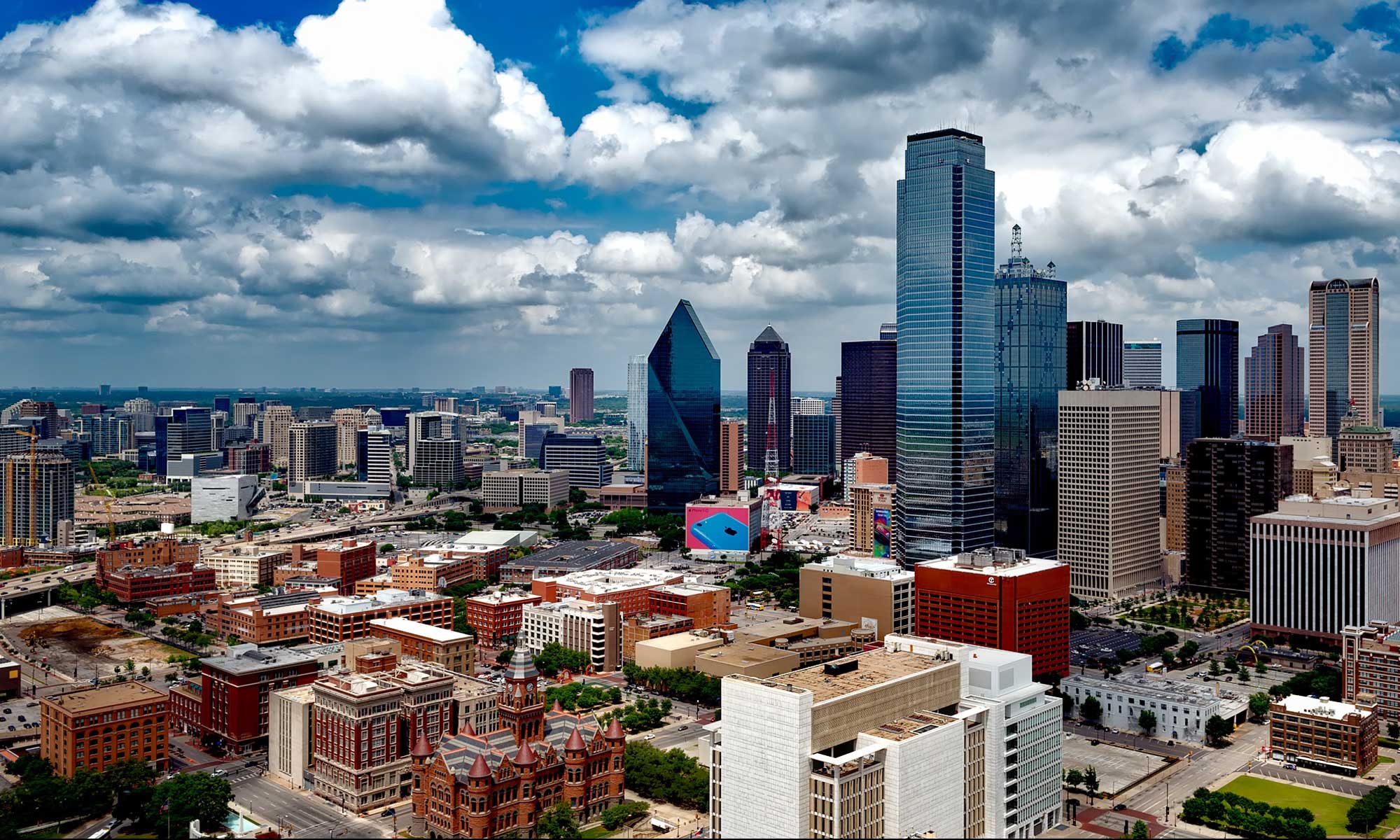Aaaand we’re back, after an annoying delay involving a lot of money and whole new computer system! As I recall, I was regaling you with my in-depth report on the State Fair of Texas, which just ended for the year a few weeks ago. Let’s pick it up already in progress, eh?
There’s a lot of impressive stuff to see at the State Fair, not least the architecture. Remember that picture of the Promenade I showed you in a previous entry, where I took a shot standing on the steps of the Hall of State? Officially, it’s called the Esplanade.* Here’s what it looks like from the other end, once they’ve filled the reflection pool and turned on the fountains. Oh, and added the cars, too.
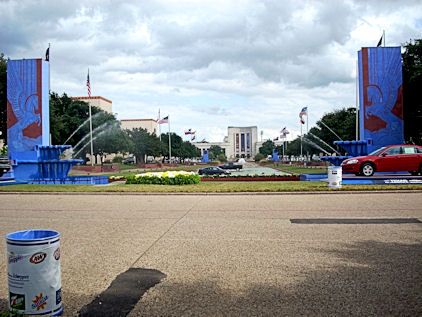
Note the fountain pillars on either side of the pool. They’re typical of the leftover artwork from the Centennial Expo in 1936. Here’s a detail of the one on the left:

It makes a lot more sense if you know that there used to be two large statues attached to the insides of these pillars, arcing inward toward each other. They disappeared over the years, probably because they were made of plaster. I haven’t been able to find much information on them otherwise.
Speaking of cars, my sister (my companion at the Fair) is a car freak, so we spent a lot of time in the auto shows in the Centennial and Automotive Buildings, which flank the Esplanade’s reflection pool. The Centennial Building was the first steel and masonry building ever constructed in Fair Park. It was originally called the Transportation Building, though later they renamed it the Chrysler Building. For some reason, when they started planning the humongous Centennial Exposition in the early 1930s, they renamed it again — I wonder why? This time it became the Centennial Building, after the Expo itself, and that name stuck. It was only 30 back then — but these days it really is Centennial in age, if only just, as this plinth points out.
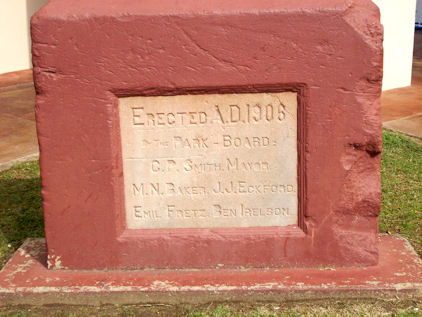
The Automotive Building, on the other hand, is much younger. It was built in 1942, and rebuilt when it was destroyed by fire in 1948. It started out as the “Varied Industries” and “Electric and Commincations” Building. You’ve gotta remember that back in the old days, state fairs were more than just places where you could hear music, buy gimcracks, and eat overpriced food. They were places to show off new inventions and items that you could expect to appear for consumer purchase within a few years – television, for example, was first displayed and popularized at State and World fairs, and many other communications breakthroughs have followed suit. I suppose this is still the case to some extent, but I’m not sure that Sleep Number beds and glass defoggers have quite the impact that those early technological exhibits did. In fact, with the exception of the cars and associated items (which I’ll get to next entry), there wasn’t all that much technology on display – unless of course you count the midway rides, and some of those were pretty creaky. Again, I’ll get there soon enough, probably a couple of entries from now.
But I digress – I wanted to talk about the Architecture before I got much farther. As I’ve mentioned elsewhere, Fair Park is basically a haven for Art Deco architecture – you’ll find more of it here than probably anywhere else in the Metroplex. You can thank the aforementioned Centennial Expo for that; it happened to fall right in the middle of the Art Deco era. While not all the buildings in the Park were built for the Expo, many were, and the rest were tarted up to meet Art Deco requirements. I love the work that was done to bring the structures up to standard, and I especially like the fact that it’s been maintained and reconstructed since. The Centennial Building is an example: there are eight murals along the length of it, originally done by Carlo Ciampaglia. I think this one is supposed to represent Speed.
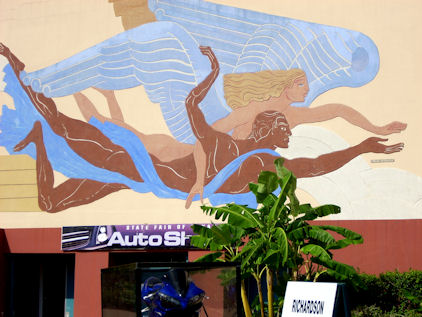
There are a bunch of murals on the exterior of the Automotive Building, too, originally painted by one Pierre Bourdelle (and lovingly recreated when the building was rebuilt after the fire). They were intended to represent the Varied Industries the building was initially built to house. This one, I think, represents the Photographic Arts.
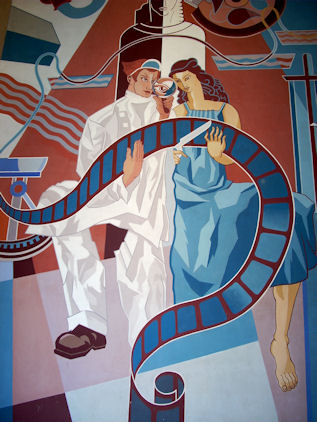
Has a rather ethereal quality to it, doesn’t it? Much like the Ciampaglia art, really.
There are also six statues flanking the Esplanade, three each in niches set into both the Centennial and Automotive buildings. These massive pieces of art represent the six flags that have flown over Texas over the centuries (and yes, that’s where they got the name for the amusement parks from. We’ll go there someday if I can stand the heat and crowds). The ones on the Centennial <> Building were designed by James Tenney Stevens; they’re supposed to represent the Republic of Texas, Confederacy and Spain. The ones on the Automotive Building, by a guy named Raoul Josset, symbolize France, Mexico, and the USA. This one is on the far end of the Centennial Building, and I think it represents the Republic of Texas, if that star behind her head means anything.
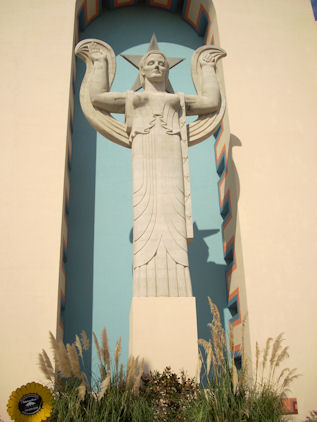
Ready to go inside? By this point, I surely was. But let’s leave that for tomorrow, shall we?
*So sue me. I got one of the syllables right, anyhow.
